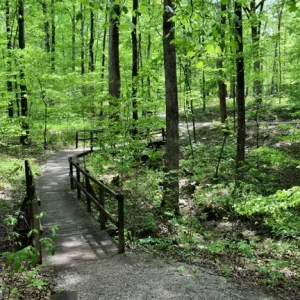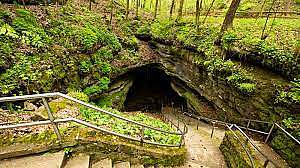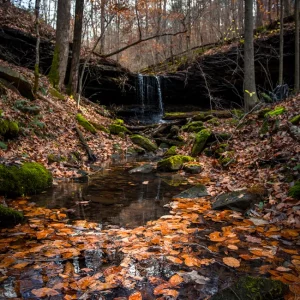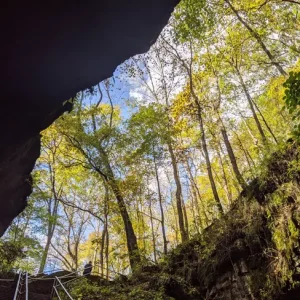
- This trip has passed.
Special Weekend Trip! Mammoth Cave National Park, KY – Volunteer Vacation 2024
September 12, 2024 @ 5:00 pm - September 15, 2024 @ 12:00 pm
Trip Navigation

Join this project to support backcountry trail maintenance in Mammoth Cave National Park, and explore the longest known cave system in the world!
Mammoth Cave National Park is a park on two levels – 52,830 acres of reclaimed hardwood forest and winding riverways, and below it, the longest known cave system in the world, surveyed at 426 miles to date. Located within a day’s drive of major population centers, it offers camping, hiking, horseback riding, bicycling, canoeing, picnicking, and cave tours. Mammoth Cave was established as a national park in 1941, later designated a World Heritage Site in 1981, and an International Biosphere Reserve in 1990. The Biosphere Reserve area was increased from 112,830 acres to 909,328 in 1996. In 2021 the park was certified as a Dark Sky Park by the International Dark Sky Association. The purpose of Mammoth Cave National Park is to preserve, protect, interpret, and study the internationally recognized biological and geologic features and processes associated with the longest known cave system in the world, the park’s diverse forested, karst landscape, the Green and Nolin rivers, and extensive evidence of human history; and to provide and promote public enjoyment, recreation, and understanding.
Volunteers will drive back and forth in their personal vehicles on paved roadway from the Maple Springs Housing Facility to the trailhead daily. Distance from housing to the trailhead will vary depending on the amount of work done the previous day. Maple Springs Trailhead is less than a 1 mile drive and the Lincoln Trailhead is about a 6.5 miles drive. Once work has reached the midpoint of the trail, volunteers will park at the opposite end of the trail and hike in to commence work at the midpoint and hike back out to the vehicles daily.
Volunteers who are experienced paddlers will also have the opportunity to participate in the river clean up. The park hosts an annual river cleanup for the 9/11 National Day of Service. This annual river cleanup will occur on 9/14. The Friends of Mammoth Cave will coordinate with local liveries to provide canoes and/or kayaks, paddles, and life vests for the group to participate in the paddling event. River levels are typically low and have very little current requiring the volunteer to be able to paddle the 12-15 miles with their gear and any accumulated litter picked up. Several sections on the river may cause the paddler to have to get out of their canoe or kayak to drag across the gravel riverbed. The park will coordinate with the Friends of Mammoth Cave canoes/kayaks, paddles, life vests, and shuttle service to and from the launch sites for the river cleanup for those interested.
During this trip, Mammoth Cave National Park’s average high temperature is 79°, and average low temperature is 61°.
There is no experience needed to join a Volunteer Vacation! Your expert hosts will provide detailed instruction, tool demonstrations, and project oversight throughout the week. All you need is a willing attitude and to be in good physical condition to participate in moderate physical activity for approximately 6-8 hours a day with plenty of breaks, at your own pace. Find out more about what it’s like to join a Volunteer Vacation and other frequently asked questions here.
AHS acknowledges with gratitude that this project takes place on the traditional lands of the ᏣᎳᎫᏪᏘᏱ Tsalaguwetiyi (Cherokee, East), S’atsoyaha (Yuchi), and Shawandasse Tula (Shawanwaki/Shawnee) peoples past and present. We honor the land itself, the Indigenous communities who have stewarded this land for generations, their deep and sacred connection to these lands, and those who continue to steward these lands today. We offer this land acknowledgement as the first of many steps to stand as an ally and amplify Indigenous voices. We invite the American Hiking Society community to join us through continued efforts to support Indigenous communities and learn more about the history of the lands on which we live, work and recreate.
Register





